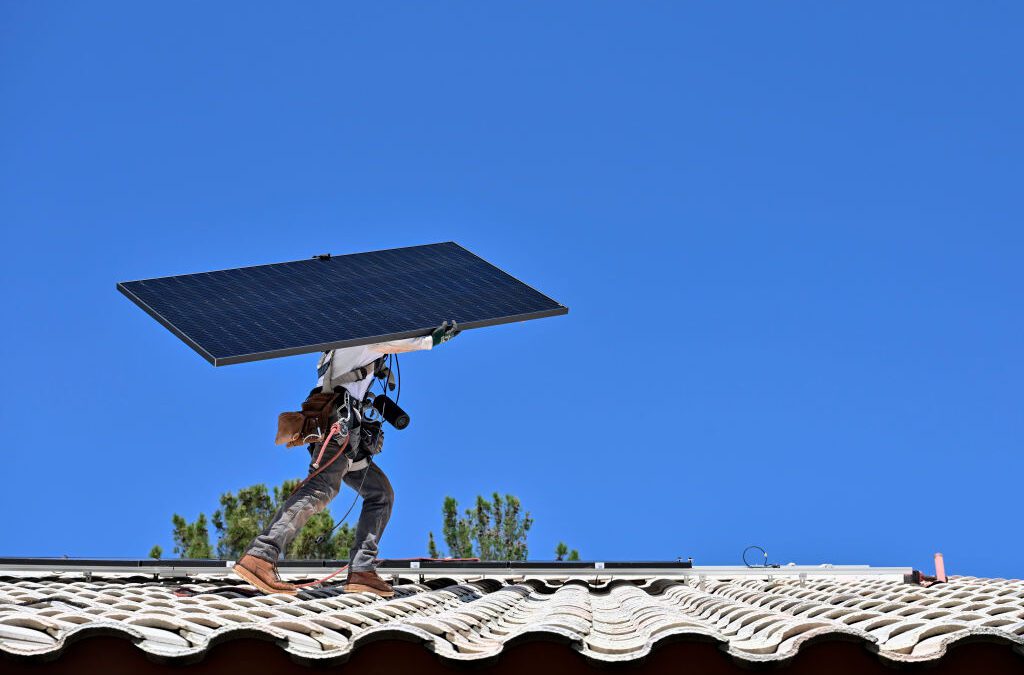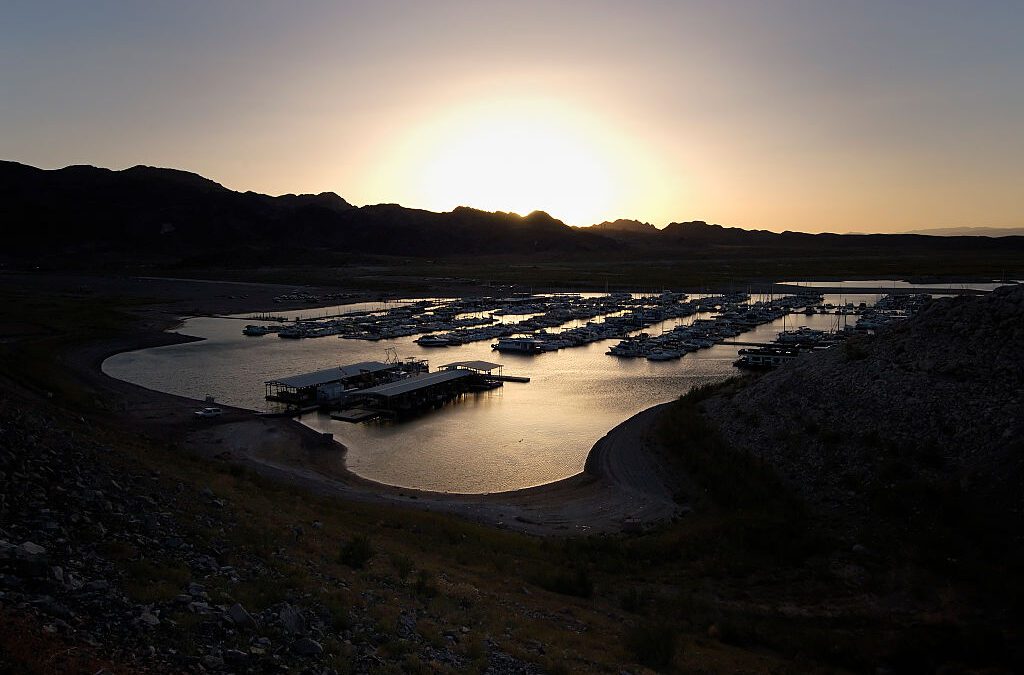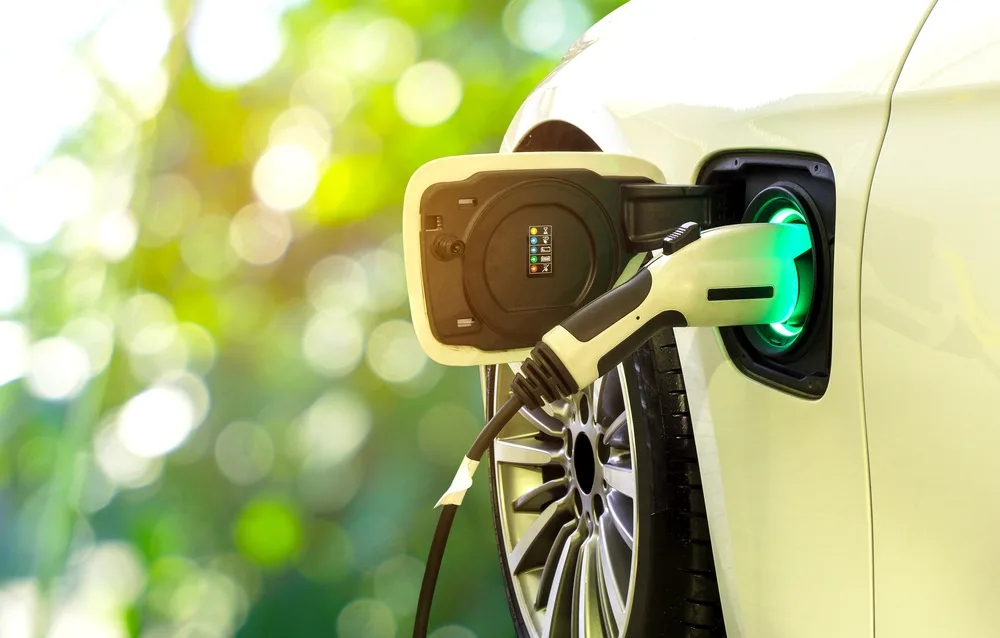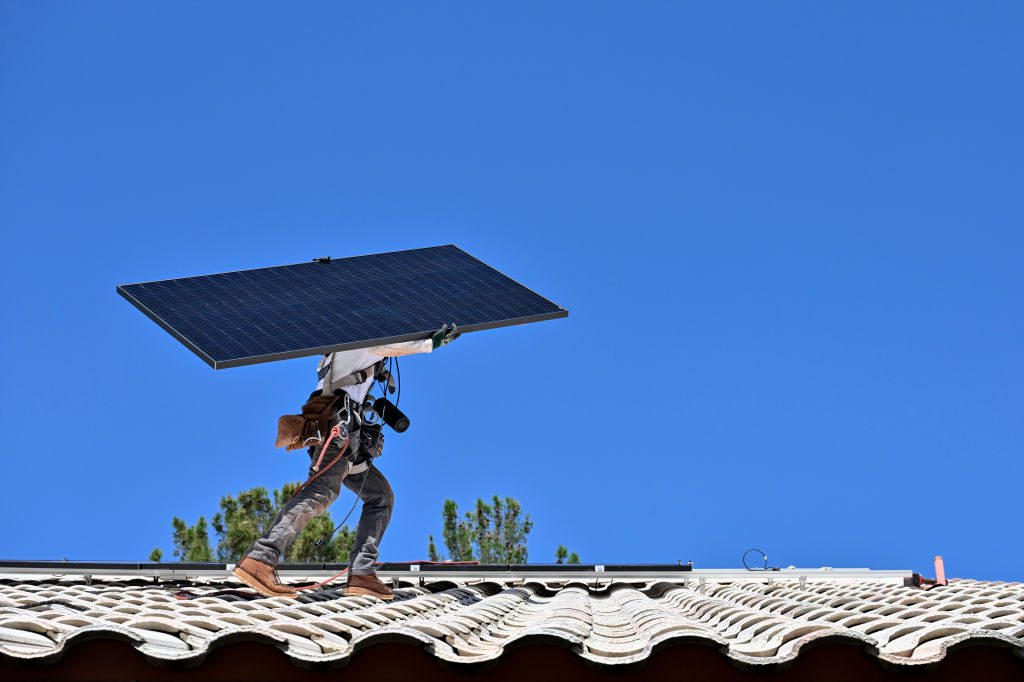
Panelists Cinthia Moore with Make the Road Nevada (left), Angelyn Tabalba with the Nevada Conservation League (right), and Rudy Zamora with Chicanos Por La Causa (center) are seen here at the event on Oct. 11, 2024 at Springs Preserve in Las Vegas, NV. (Photo via The Nevadan Live Stream)
Panelists discussed the intersection of climate change and its impacts on Latino communities, Nevada’s specific struggles with air quality, housing, and water infrastructure, and how federal investments are transforming Nevada into a clean energy powerhouse.
The Nevadan/El Nevadense hosted a free event — Climate Impact & Nevada’s Path Forward — on Friday night in Las Vegas, where state advocates discussed the local impacts of climate change and investments from the Biden-Harris administration to combat those impacts.
The event was sponsored by Climate Power, and the main panel featured Cinthia Moore with Make the Road Nevada, Angelyn Tabalba with the Nevada Conservation League, and Rudy Zamora, with Chicanos Por La Causa.
Moore kicked things off by discussing the intersection of Las Vegas’ Latino communities and the impacts of climate change and extreme heat on them.
“Environmental issues intersect with everything from housing to transportation to even health care,” she said. “East Las Vegas is where a lot of the Latino community lives. They’re primarily immigrants or first generation as well. East Las Vegas is right in the middle of an urban heat island.”
An urban heat island is an urban area that’s significantly warmer than surrounding rural areas.
“This is where I live and where our immigrant community lives as well,” she said, while stressing the fact that Hispanics are almost twice as likely to visit the emergency room for asthma attacks than non-Hispanic whites.
To address the urban heat island, Moore urged the expansion of shade structures to give relief to East Las Vegas and other areas facing higher temperatures.
She also said local governments needed to do more to address the problem and pointed to the successes of cities like Phoenix in addressing the impacts of extreme heat.
Trees, green roofs, and vegetation can also help minimize heat island effects by protecting building surfaces from extreme heat, deflecting radiation from the sun, and releasing moisture into the atmosphere, according to the US Environmental Protection Agency.
Zamora spoke about the intersection of environmental and economic justice as well. He mentioned the fact that his son suffered an asthma attack that nearly killed him.
“It’s a story that should not be repeated,” he said. “As a parent, I don’t wish that on any person. But these are stories we hear in the communities we serve.”
Zamora said that a big reason why asthma is such a large problem in the Latino communities of Nevada is because of the housing crisis. In Sept. 2020, the median home sale price in Nevada was $344,900. As of July 2024, that figure had risen to $467,400, a 35% increase, according to Redfin. In Las Vegas, the average cost of rent is $1,457 per month, up over 30% from the beginning of the pandemic.
The rising cost of rent has stretched many Latino families to the economic brink. In many cases, they’ve been forced into areas with more pollution and emissions.
“Our families are being pushed closer and closer to the highway,” Zamora said, adding that that exposes them to exhaust fumes from larger vehicles.
This is why his organization has been such a big advocate for “clean buses,” something that the Biden-Harris administration has prioritized. As of 2024, Biden’s Bipartisan Infrastructure Law has provided Nevada with nearly $8 million for electric school buses across the state.
Under President Biden’s Inflation Reduction Act (IRA), manufacturers are also receiving subsidies for building electric vehicles (EVs). The IRA also created a credit which offers consumers up to $7,500 off the purchase of an EV, depending on the make and model of the car, at the point of sale.
The law, which is often referred to as the Clean Energy Plan, has also led to a wave of investments in other clean energy technologies, like solar and wind, due to its tax incentives for utilities and companies.
As of 2024, the Inflation Reduction Act has spurred $14.5 billion in new clean energy investments in Nevada and created 20,098 new clean energy jobs statewide.
Tabalba further spoke about the Biden-Harris administration’s efforts to address climate change in Nevada.
For example, the IRA established a mix of tax credits for companies and rebates for consumers in order to make the manufacturing and consumption of clean energy technologies and products cheaper.
“What’s amazing about these Clean Energy Plan investments is those consumer level benefits,” she said.
One of these benefits is the Energy Efficient Home Improvement Tax Credit, which can help offset the cost of certain home improvement projects, such as installing energy-efficient insulation, windows, doors, and electric heat pumps. It may even lower future heating bills, according to experts. This tax credit can also reduce homes’ greenhouse gas emissions.
The administration also offers a tax credit available through the IRA that offers up to 30% of the cost of installing the solar panels, with no cap. The IRA further offers a 30% tax credit for homeowners that need to upgrade their entire electricity panel to install rooftop solar, as well as a 30% credit for installing battery storage.
“We’re telling consumers to invest,” Tabalba said. “The provisions in the Clean Energy Plan (the IRA) provide tax credits for clean energy and tax credits for energy efficiency.”
Tabalba also mentioned the fact that there are tax credits for installing an electric vehicle charging station on your property and for weatherizing and insulating your home.
“These really go back to some of these kitchen table issues that Nevada families are talking about,” she said. “We’re talking about the cost of everything, we’re talking about our economy. The Clean Energy Plan (the IRA) provides these solutions to help bring down the costs.”
Tabalba concluded the panel by discussing Nevada’s water challenges. While the state isn’t running out of access to clean water anytime soon, drought and a growing population make conserving the resource a top priority of state and federal officials.
“Nevada’s the driest state in the nation, but we’re also home to the best water conservation programs in the country,” she said, highlighting the work of the Southern Nevada Water Authority and the Truckee Meadows Water Authority to address these challenges.
The Bipartisan Infrastructure Law also allotted tens of millions of dollars for Nevada drinking water, wastewater, and stormwater infrastructure.

Trump’s Executive Orders Could Raise Energy Costs and Threaten Jobs in Nevada
Nevadans could soon feel the pinch in their wallets and job prospects thanks to recent actions by President Donald Trump. A report shows that...

More than a dozen NPS workers fired from Lake Mead as part of mass federal workforce purge
The positions eliminated include park rangers, engineers, ecologists, maintenance workers, and cultural resource staff for the ninth most-visited...

Condena Chispa Nevada el retiro de apoyo en su pago de electricidad a familias de bajos ingresos
Chispa Nevada condena que la administración Trump retire ilegalmente el financiamiento del programa de Nevada para reducir las facturas de...

Biden admin moves to shield Nevada public lands from mining with support of tribes, local leaders
In one of President Biden’s last moves in office, his administration has moved to protect 269,000 acres of public land in Nevada from a proposed...

Many fear help for Nevada water conservation will dry up under Trump
Despite billions from the Inflation Reduction Act going to benefit Nevada, President-elect Donald Trump and conservative fiscal hawks may pursue a...

Grant from Biden infrastructure law to help install 185 EV charges around Las Vegas valley
A $3.2 million grant from the US Department of Transportation will help fund and install electric vehicle charging stations in primarily...




